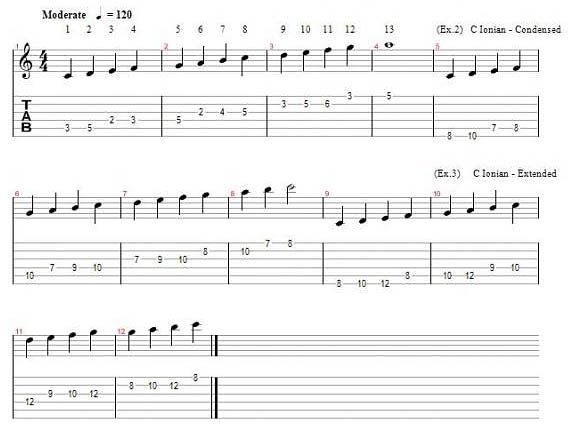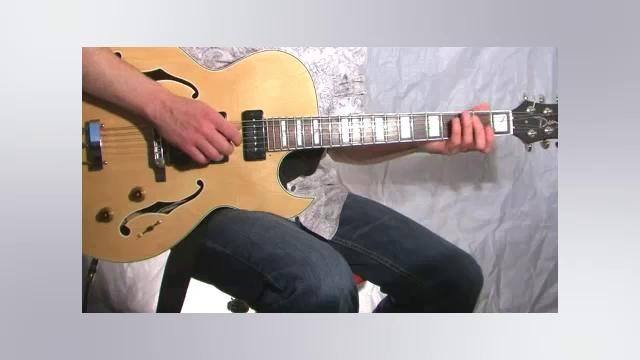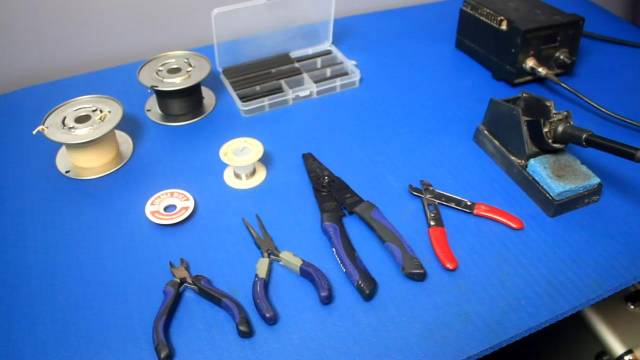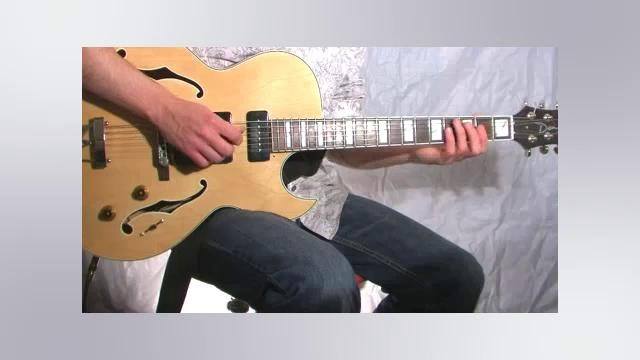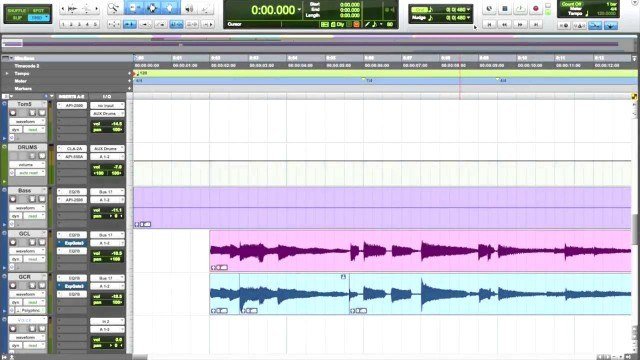Hi, and welcome to this exciting lesson on The Modes: Music's Rubix Cube. So fasten your seat belts people!
We know that the major scale is defined by the arrangement of half steps and whole steps within the 12 tones of western music. Another way to look at this is to number each note.
 |
This by far is the easiest way to think of scales rather than thinking of them as whole and half steps. This is also the system used to construct chords by. Our Major scale formula will always be: 1-2-3-4-5-6-7 no matter what key. The formula for the natural minor scale looks like this: 1-2-b3-4-5-b6-b7. This scale is different than the Major scale because it contains the minor 3rd, minor 6th and minor 7th.
The major scale that I have written is shown going past the octave and up to a major 6th to show the different extensions that are in this scale, the most important ones being the 9th, 11th and 13th, which are important when creating 9th, 11th and 13th chords.
Before we actually start getting into the modes, it's a good idea to find out what a mode actually is. A mode is an inverted scale where one of the notes from the scale becomes the starting point of another scale contained within the first principle scale. In the C major scale, this note is C. When C is the tonic, or root, we call this the C major scale. The Greek name for this scale would be Ionian. Ionian is the first of the 7 major scale modes.
C Ionian: 1-2-3-4-5-6-7-8
As you already know, the C Ionian scale has a formula of: 1-2-3-4-5-6-7-8. These notes can be played all over the fretboard using many different patterns and variations. The way you would play this scale on the neck can be put into two patterns: a condescended position or an extended position. Experiment with these to see which one you prefer to use.
 |
Now, the mode which begins on the second degree of the C major scale is called the D Dorian scale. The formula for the Dorian mode is 1-2-b3-4-5-6-b7. If the C major scale is used as a starting place it is possible to see how this formula comes about:
|-B Locrian--|(B-C-D-E-F-G-A-B)
|-A Aeolian--|(A-B-C-D-E-F-G-A)
|-G Mixolydian-|(G-A-B-C-D-E-F-G)
|--F Lydian---|(F-G-A-B-C-D-E-F)
|--E Phrygian-|(E-F-G-A-B-C-D-E)
|--D Dorian---|(D-E-F-G-A-B-C-D)
|--C Ionian---| (C-D-E-F-G-A-B-C)
The reasoning for this is because: if the Dorian mode is made up of the notes from the major scale beginning and ending on the second scale degrees, then those notes must be compared to the notes found in the major scale starting on the second scale degree. If D Dorian is made up of D-E-F-G-A-B-C-D, then these notes must be compared to the D major scale. D major has 2 sharps: F# and C#. The D Dorian mode has no sharps so this mode is different from the D major scale because of the minor 3rd and minor 7th. This is why the Dorian mode always has the formula of 1-2-b3-4-5-6-b7. The formulas for all the other modes are created in the same manner:
Ionian: 1-2-3-4-5-6-7
Dorian: 1-2-b3-4-5-6-b7
Phrygian: 1-b2-b3-4-5-b6-b7
Lydian: 1-2-3-#4-5-6-7
Mixolydian:1-2-3-4-5-6-b7
Aeolian: 1-2-b3-4-5-b6-b7
Locrian: 1-b2-b3-4-b5-b6-b7
The main reason for learning the modes is because there is going to be a time when you come across a chord or progression that calls for a specific scale to go with that chord/progression. Many different chords exist and it’s likely that one of the modes will sound good over them. The task is to learn which modes go with which chords. Tune in for part 2 where we will be discussing the first mode of the Major Scale: The Ionian Mode
